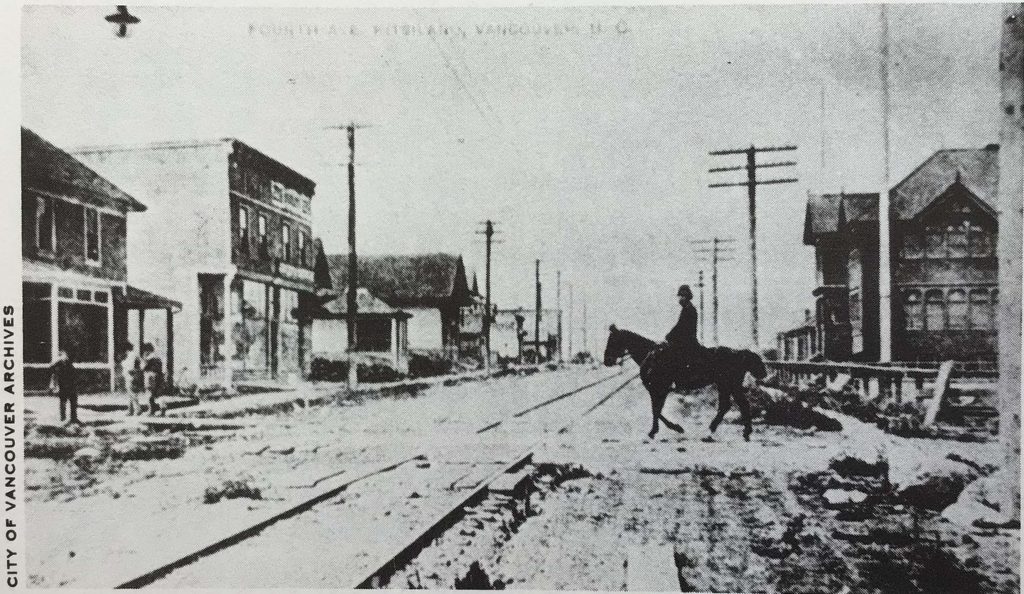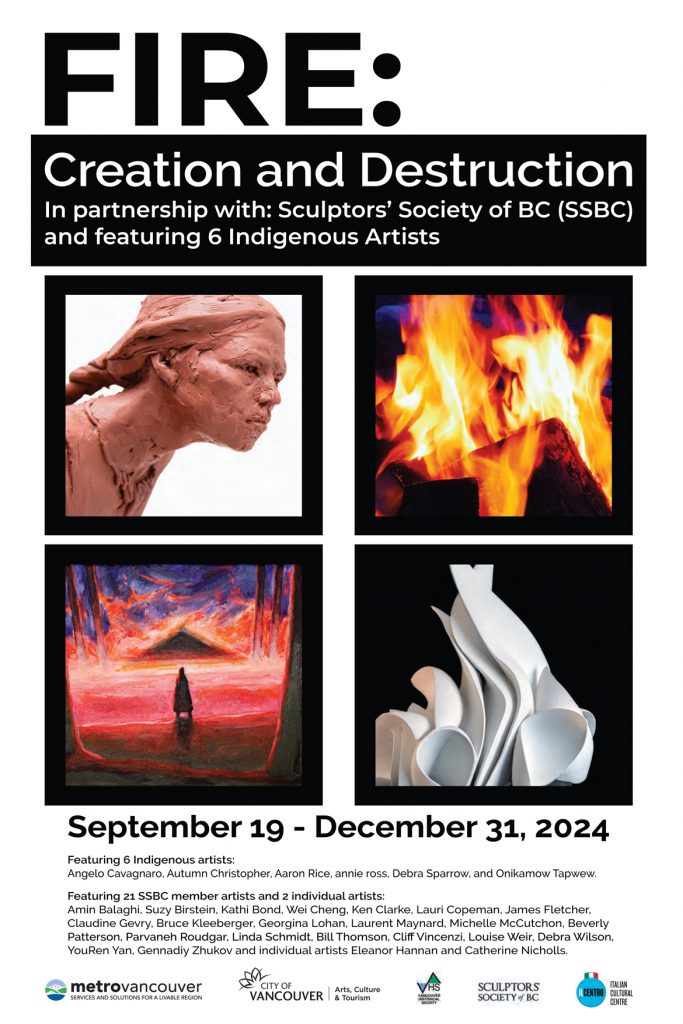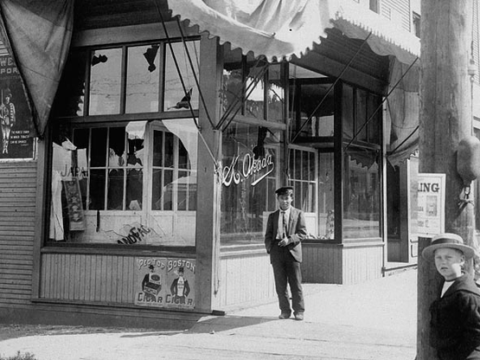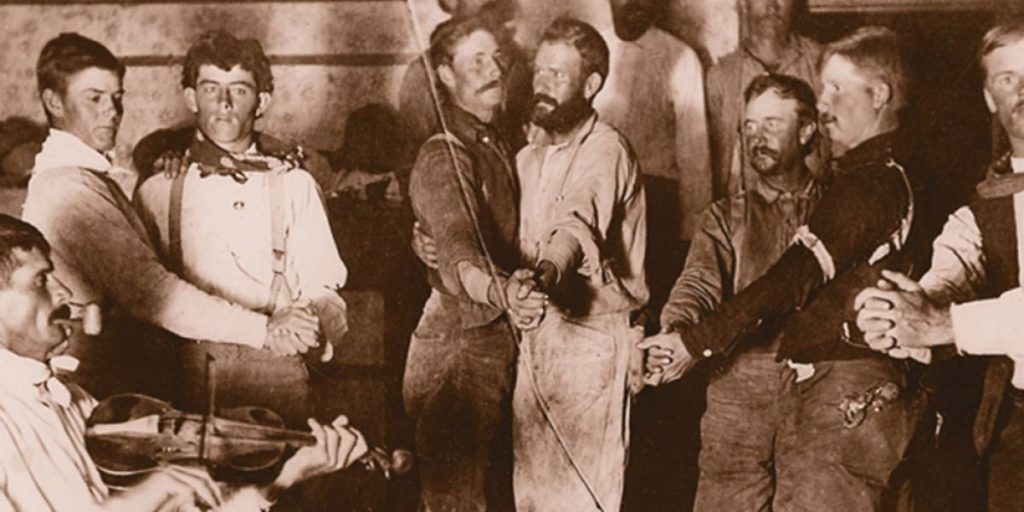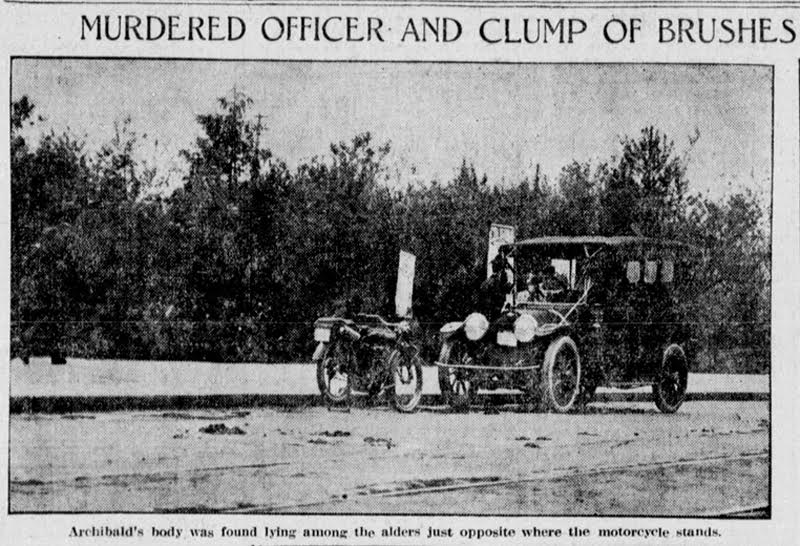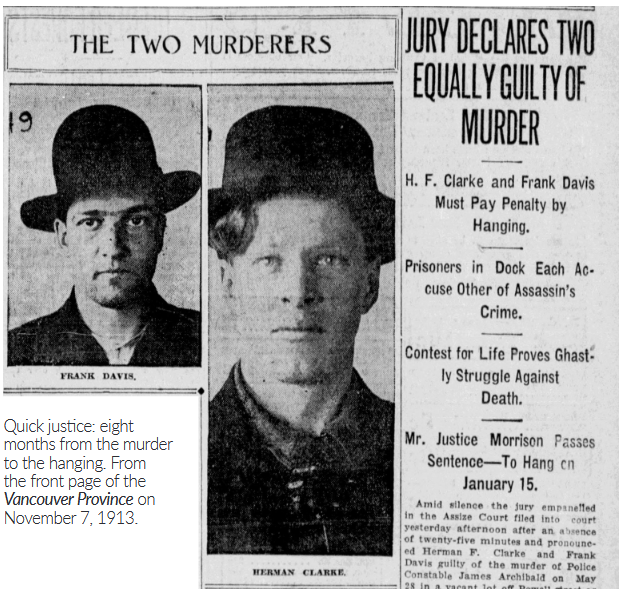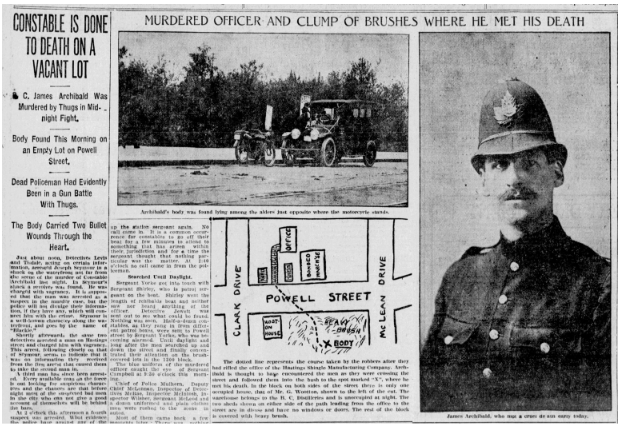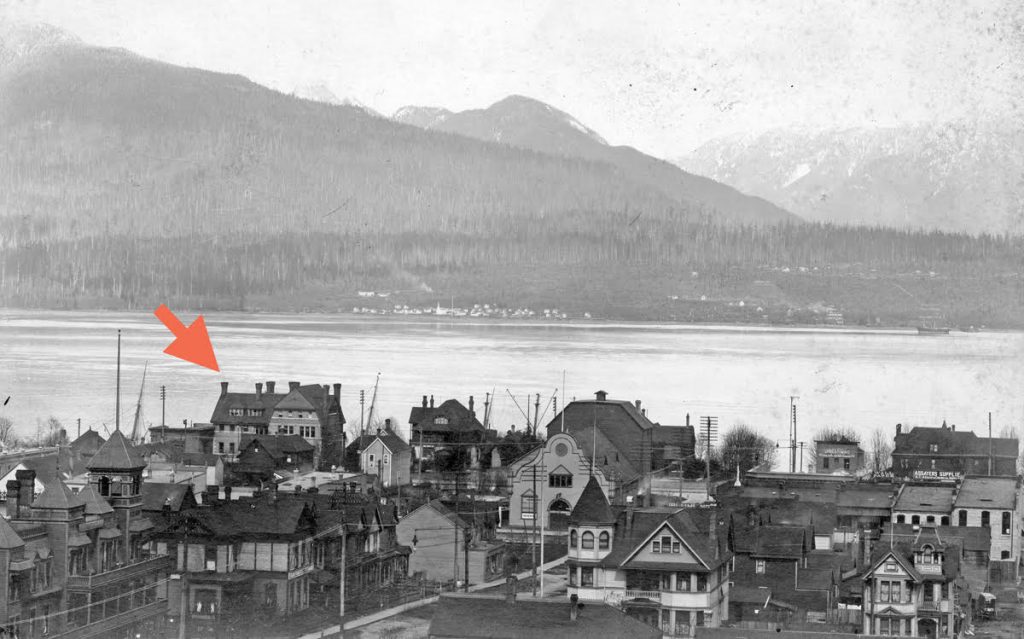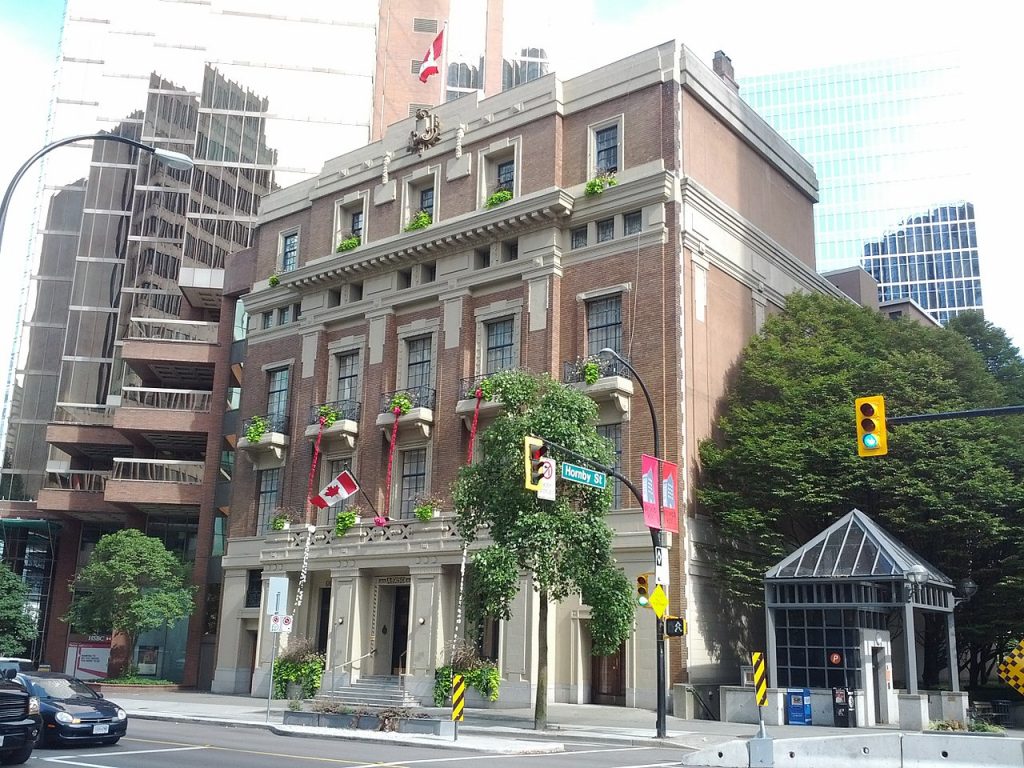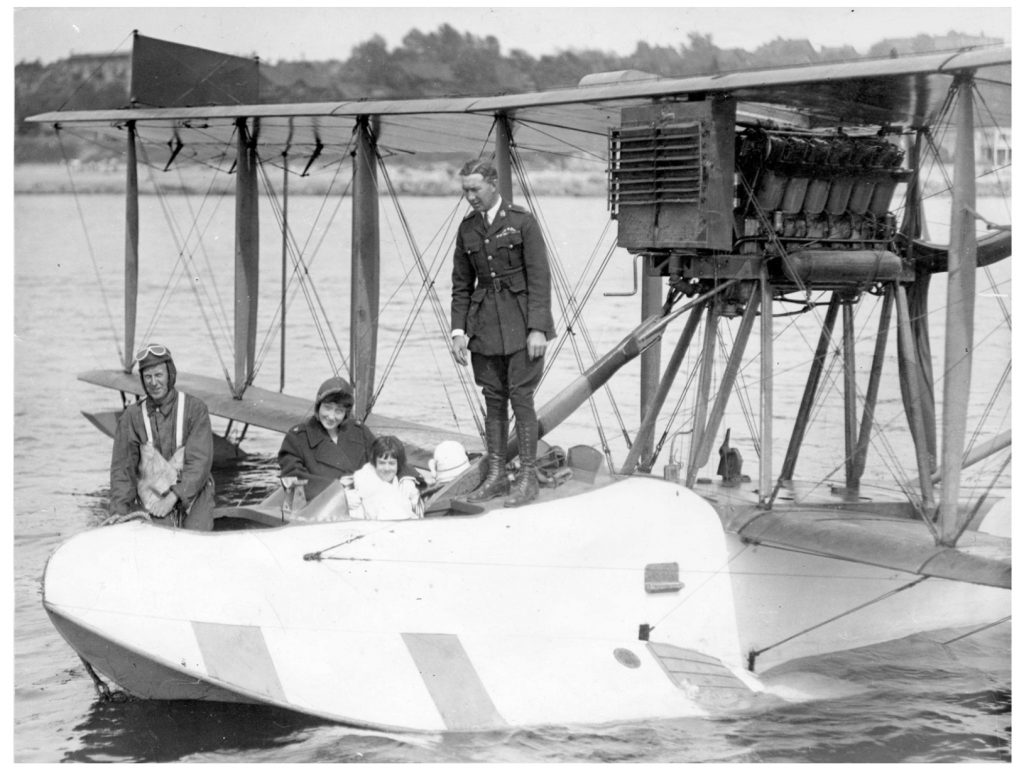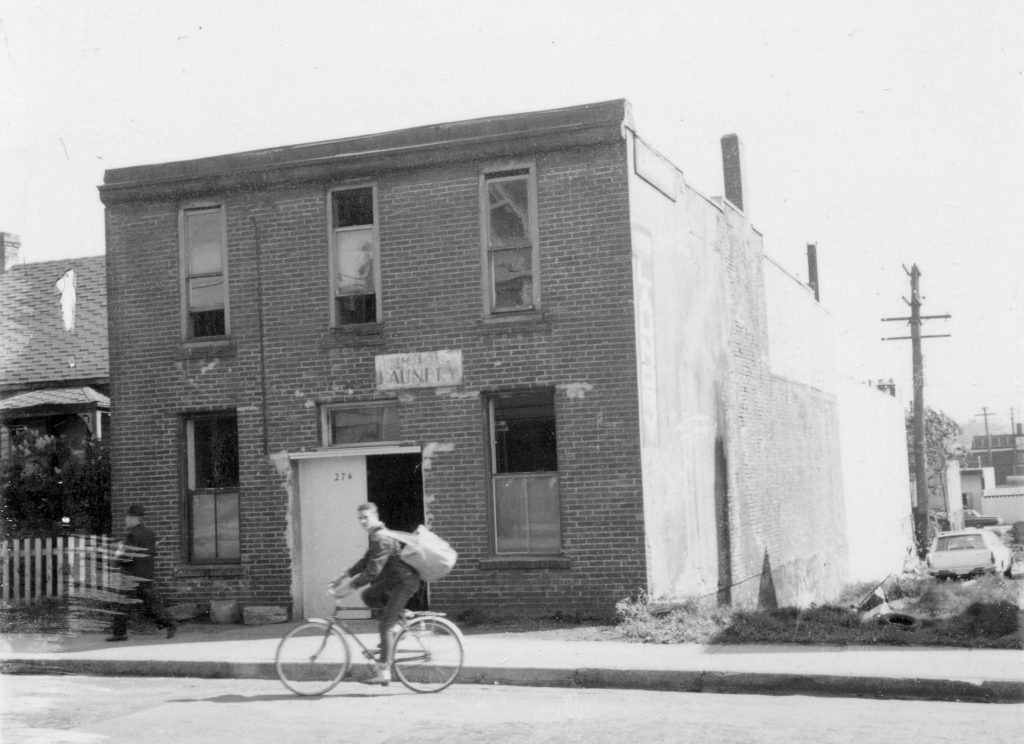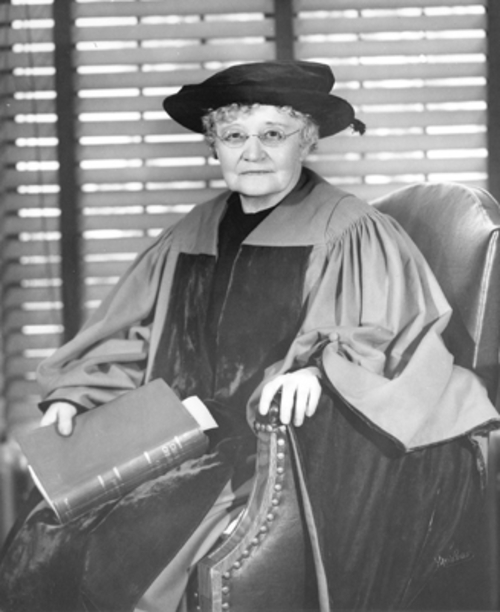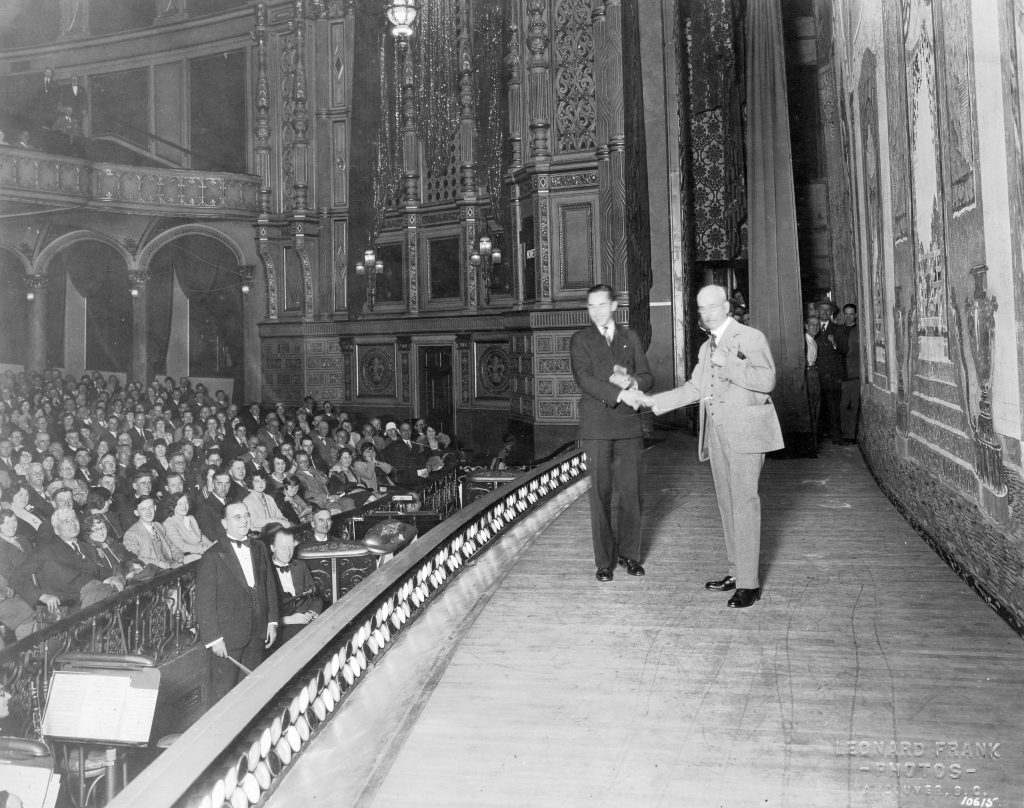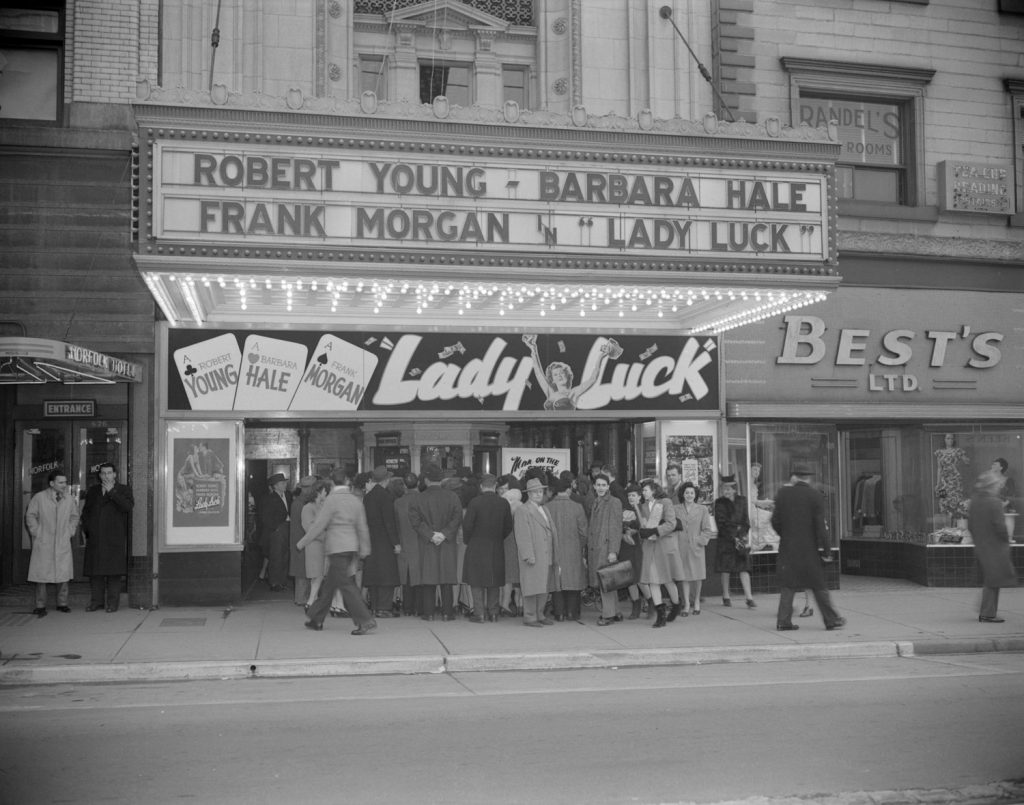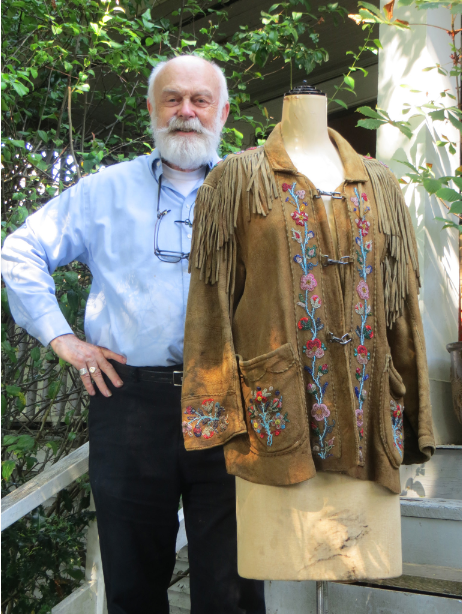Summaries of Talks and Field Trips - 2024
Glimpses of the Past through description, related books and internet connections
From Sen̓áḵw to Kitsilano to Sen̓áḵw again – a Kitsilano lecture in Kitsilano
The history of Vancouver’s cherished Kitsilano neighbourhood was explored from the Sḵwx̱wú7mesh (Squamish) era to the 21st century in a richly illustrated presentation by author-artist Michael Kluckner.
Burning History - Uncovering the Role of Fire in BC
October 24, 2024 MoV Liz Toohey-Weise & Jen Baron
The VHS partnered with the Italian Cultural Centre on an exhibition and a pair of lectures related to wildfires. Liz Toohey-Weise takes a stunning artistic approach in “Fire Season: Collective sense-making on the topic of wildfires”.
Deeply interested in the history of landscape painting, her paintings explore contemporary relationships between identity and place. Born and raised in the suburbs of Vancouver, her work seeks to intervene in the broader notion of “landscape” in the cities and the surrounding natural areas she finds herself in.
Forest scientist Jen Baron takes a different direction with “Burning History: Uncovering the Role of Fire in British Columbia’s Ecosystems,” based on her expertise on Wildfire ecology and management, forest fire behaviour and risk, ecosystem resilience, restoration and conservation, climate change, landscape ecology, and remote sensing.
Jen is a transdisciplinary ecologist and researcher with the Pacific Institute of Climate Solutions (PICS) Wildfire & Carbon Project and Canada Wildfire Strategic Network, with a current focus on wildland fire, disturbance & landscape ecology, and data science.
White Riot 1907
Henry Tsang, author of the prize-winning book, White Riot: The 1907 Anti-Asian Riots in Vancouver explored the conditions leading up to and the impact of a demonstration and parade in Vancouver, Canada, organized by the Asiatic Exclusion League and the ensuing mob attack on the city’s Chinese Canadian and Japanese Canadian communities.
Galvanized by riots that had driven out hundreds of South Asian immigrants from Bellingham, Washington, three days prior, thousands marched through Vancouver’s streets on Sept. 7 in protest of Asian immigration. The rally, organized by the local AEL chapter, quickly turned into a riot. Swarms of mobs reportedly smashed every window in Chinatown before heading to Little Tokyo, or Japantown, where hundreds confronted them. Armed with sticks, knives and other weapons, Japanese men and boys squared off with rioters until the mob finally dispersed early the next morning.
Nobody was seriously injured. But according to a government estimate, the attacks cost Asian businesses tens of thousands of dollars in damage and lost revenue. Only one person was convicted for taking part in the riot. While the Canadian government compensated Vancouver’s Chinese and Japanese communities for their financial losses, the government made no effort to root out the racist fervour that sparked the violence.
The Francophone Ranchers of BC's Interior Plateau - 1860s-70s
August 30, 2024 MoV Maurice Guibard
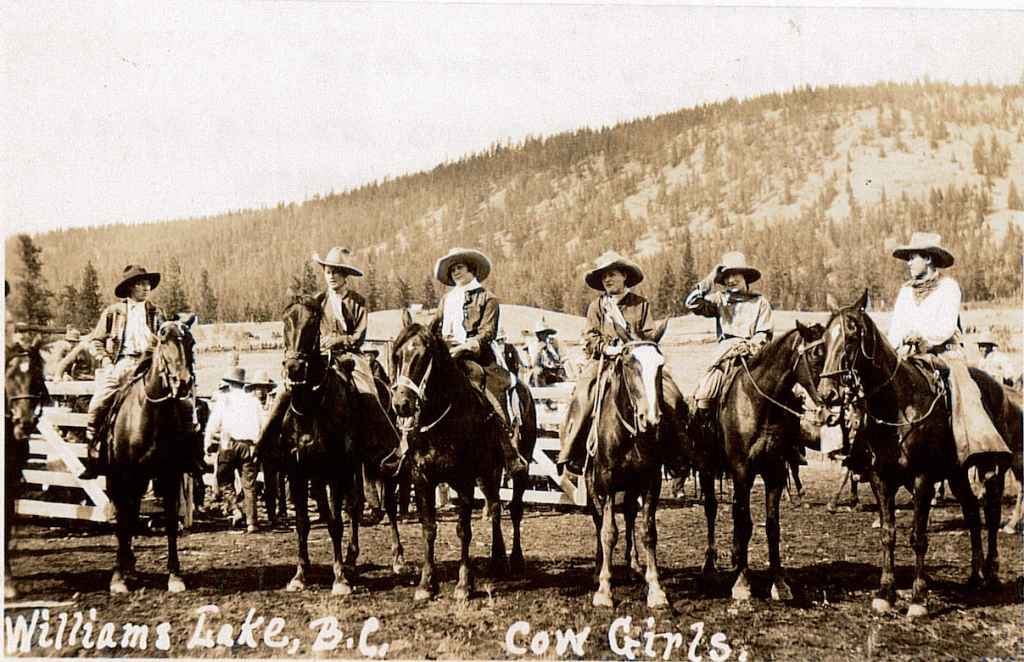
Image: www.communitystories.ca
La Société historique francophone de la Colombie-Britannique has done onsite research in the Cariboo and the Okanagan on the history of Francophones who launched ranches in those regions in the 1860s-70s, holding oral history interviews with their descendants, and creating from the results a bilingual digital exhibition. The families that became the focus in this talk are: Isnardy, Patenaude, Miniberriet, Guichon, and Versepuech. You will see how their respective places during their historical journeys. It is indeed from these families that we have been directed to disseminate the facts unearthed during this project.
The Queer Frontier: The Untold Story of Canada’s Queer Wild West
To an outsider, the gay community might seem to have
exploded into view suddenly with the start of pride parades
and festivals in the 1970s. But the voyage from the shadows
to parades has been a long and treacherous one, which helps
explain the exuberance of Pride events even today. The Pride
of today is a far cry from the Shame of yesterday – a world
where being gay meant being fired from work, expelled from
church and fraternal clubs, denied accommodation, and excluded from society in general.
The Queer Frontier took us into the queer world that was very much alive and well in early Vancouver’s Victorian and Edwardian rough-and-tumble world of lumber camps and residential hotels. A world of discretion and danger, but also one of companionship, solidarity, and love.
You've Got Trouble!"
The waterfront. The word conjures images of pleasure ships, dangerous dark alleys, ferryboat daytrips, crime, grime, and rats. In Vancouver – a globally oriented port town since colonists first arrived – it has always been the economic heart and the cancerous soul of the city. A place where fortunes were built and immigrants monitored if not barred, the docks were also where generations of Vancouverites in their thousands found work … legitimate and otherwise.
Madison Heslop has been studying waterfronts of the Pacific Northwest not as separate and isolated, but as connected by water, money, and people.
She uses the case of a 1913 murder to map out the social geography of the urban waterfront and break down how
the city’s colonial history and institutions shaped the lives of ordinary people working and living there
Incorporation Day Luncheon
Apr. 07, 2024 VC Michael Kluckner
The Vancouver Historical Society co-hosted with the Vancouver Club this very special event to mark Vancouver’s 138th birthday.
It included a tour of the 1914 Sharp & Thompson building, an illustrated talk by writer/historian/artist Michael Kluckner on the history of the club and its neighbourhood and the kind of society Vancouver was at its founding in 1891, five years after the City itself incorporated. This was followed by a delicious lunch in the beautiful Vancouver Club Ballroom.
“Little Othoa”: The Gleam O’Hope Princess and the founding of the Vancouver Crippled Children’s Hospital
Othoa Scott got a rough start in life. An accidental fall and spinal tuberculosis left her bed-ridden and isolated at the age of eight years. Relentless advocating by her stepmother mobilized the Women’s Institutes of BC and thus sowed the seeds of the Crippled Children’s Hospital in Vancouver and the Queen Alexandra Solarium for Crippled Children on Vancouver Island.
This presentation told the tale of Othoa’s voyage from Hornby Island shut-in to the cheerful face of disability: the “Gleam O’ Hope Princess.”
This is a story which brings together the BC Women’s Institutes, the Pacific National Exhibition, Vancouver’s Crippled Children’s Hospital and the Queen Alexandra Solarium for Crippled Children on Vancouver Island. Othoa, the “Gleam O’ Hope Princess,” connects them all.
The two presenters brought their combined expertise to bear on Othoa’s story. Tamara Myers specializes in histories of childhood. She has published extensively on the historic plight of children in vulnerable circumstances.
Megan Davies last presented to the VHS in May 2021. Her topic “A Mad Moment in Vancouver’s History” was one of the first delivered via Zoom in the midst of the Covid pandemic.
Lost Streams of Still Creek
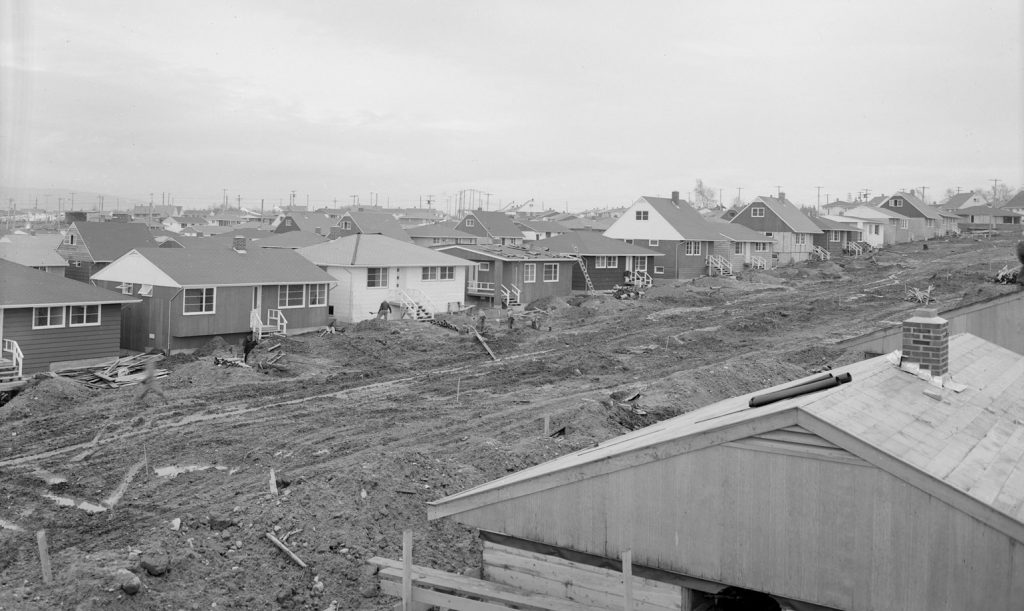
Heritage activist and community historian Laura Saimoto gave a lecture and lead a discussion on the History of the Rupert-Renfrew neighbourhood of East Vancouver, a new district boundary that merges part of the Renfrew-Collingwood and Hastings-Sunrise areas.
This fascinating look at a working-class corner of Vancouver explored its natural features including Still Creek, and the postwar subdivision officially known as Renfrew Heights but remembered as “Diaper Hill.”
It was a deep dive into the rich layers of an area which reveal a rich history woven by the culture of waves of immigrants who built over the now “Lost Streams of Still Creek.”
From its densely forested begin-nings, laced with creeks and marshes, to a working-class suburb called Hastings Townsite, home to the fist intentional 600 unit subsidized federal housing projects in Vancouver built for returning veterans, the area tells the largely unknown story of how Vancouver grew as a city.
Humble Roots, Deep Roots: A Look at a Quintessential Chinese Canadian Family
Elwin Xie’s presentation included government-created family documents: the CI 44 mandatory registration of 1923 as well as CI 30 Travel Documents and CI 45 for locally born Chinese Children. There were two short videos: a family genealogical video and his very funny shadow puppets video of life at the laundry.
Elwin grew up in a laundry on Union Street, on the edge of Chinatown, and is a museum guide at the Chinese Canadian Museum and has worked as a museum interpreter at the Burnaby Village Museum since 2009. He is also the familiar face at our lectures, recording them and crafting them into the finished videos on our YouTube channel.
Defying Convention: the life of Helen Gregory MacGill
In Helen Gregory MacGill (1864-1947), Ontario’s elite produced a New Woman who startled contemporaries. A pioneering co-ed at the University of Toronto and a bohemian journalist, she took a younger man as a husband after a week’s courtship and expressed sympathies with Asian migrants. A feminist in politics and in print, she spotlighted BC’s need for a revolution in the legal rights of women and children and served as a feminist juvenile court judge. Helen challenged expectations forgender and class throughout her influential life and bridged two feminist generations (from her activist mother to her aeronautical engineer daughter, Elsie Gregory MacGill). Although her legal career is often recalled, her passionate, sometimes scandalous, early life and wider efforts as a Vancouver feminist activist are the focus of this evening’s presentation.
A Tour of the Orpheum Theatre
This special tour, arranged by Bill Allman of the Entertainment Hall of Fame, revealed secrets of the theatre’s history. It included a visit to its Wurlitzer organ conducted by Tom Carter, VHS Treasurer, who surprised us with an impromtu performance. [Click on button below to view video]
The Orpheum Theatre was opened in 1927 as a movie theatre palace and vaudeville house. The Orpheum was designed by Seattle-based Scottish architect Benjamin Marcus Priteca in a “conservative Spanish Renaissance” style and financed by Vancouver businessman Joseph Langer for $1.25 million. Following the end of vaudeville’s heyday in the early 1930s, the Orpheum became primarily a movie house under Famous Players’ ownership, although it continued to host live events. In 1973, for economic reasons, Famous Players decided to gut the inside of the Orpheum and convert it into a multiplex. A “Save the Orpheum” public protest and fundraising campaign was launched, and the Orpheum was saved. On March 19, 1974, the City of Vancouver bought the theatre for $7.1 million, with $3.1 million coming from the city itself and $1.5 million from each provincial and federal government. The Orpheum closed on November 23, 1975, and the renovation and restoration was done by the architectural company Thomson, Berwick, Pratt and Partners. It re-opened on April 2, 1977, and has since been the permanent home of the Vancouver Symphony Orchestra. Tony Heinsbergen, a U.S. designer who originally chose the colour scheme for the interior (ivory, moss green, gold and burgundy), was brought back fifty years later for the renovation.
Bill Allman is president of the BC Entertainment Hall of Fame, owner of Famous Artist Limited and a “recovering Vancouver lawyer”. Having worked as an entertainment lawyer and associate producer on an array of television projects, as well as holding a position as an adjunct professor of law at UBC, Bill has also found time in the last 25 years to be a concert promoter, theatre manager (the Vogue) and president of Vancouver’s legendary Theatre Under the Stars.
Artist Tom Carter, based in Vancouver Canada, is best known for his work exploring sombre and gritty working-class urban environments that reveal glimpses of hope and warmth.
Dressed for History at the MoV: Why Costume Collections Matter
A special tour with curator Ivan Sayers of the costume exhibition at the Museum of Vancouver, concluded with coffee and cookies in the MoV boardroom.
Four local collectors have recognized the importance of preserving costumes to document the past and inspire the future. Ivan Sayers, Claus Jahnke, Melanie Talkington and the members of the BC Society for the Museum of Original Costume (SMOC) are fashion historians with significant collections that feature some of the rarest garments and fabrics in the world.
The Museum of Vancouver has invited these collectors to share their knowledge of costume history by showcasing pieces from their collections. Dressed for History: Why Costume Collections Matter posits that fashion is an enduring expression of personal identity and social change. This exhibition confirms Vancouver as home to world-class costume historians.
Ivan Sayers is a fashion historian who specializes in the study of women’s, men’s, and children’s fashions from 1700 to the present. He has collected period costumes for over 50 years and now has one of the largest and most comprehensive private collections of historical clothing in Canada.


